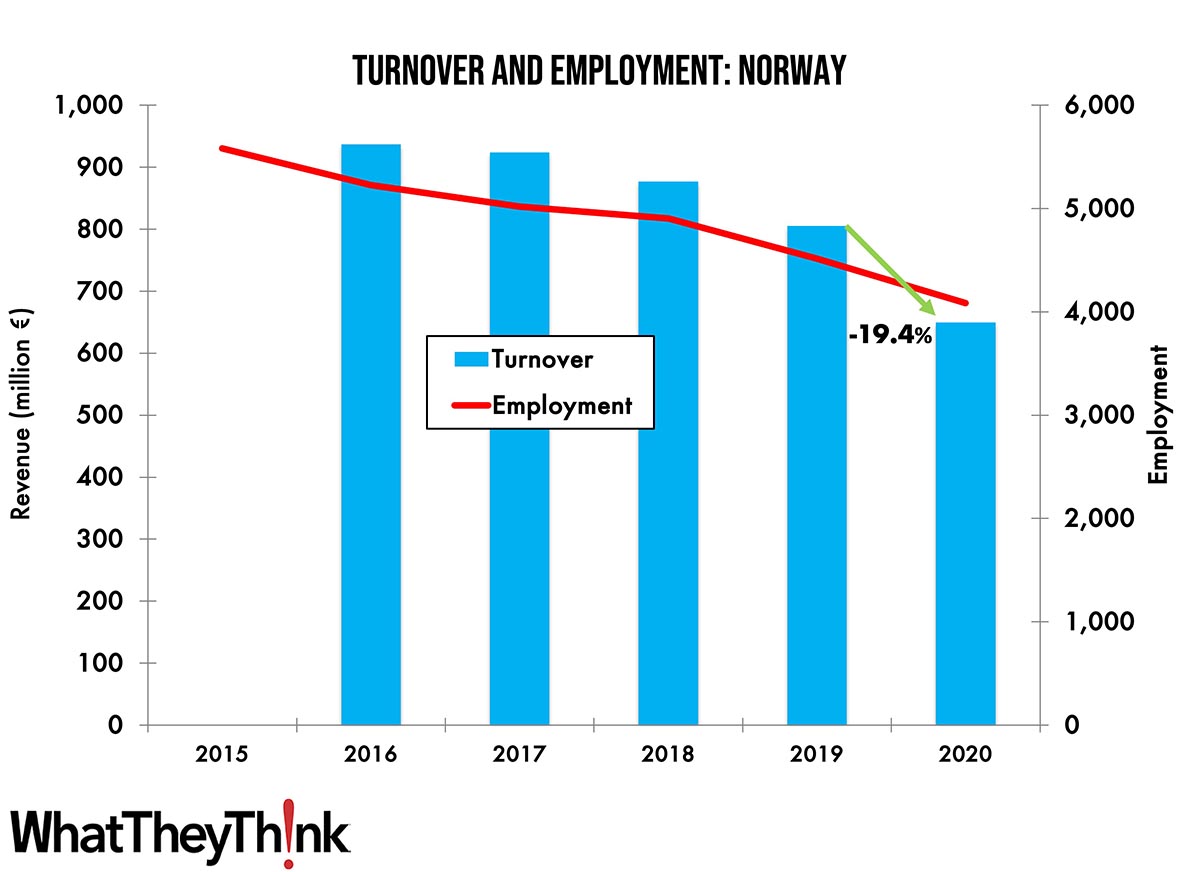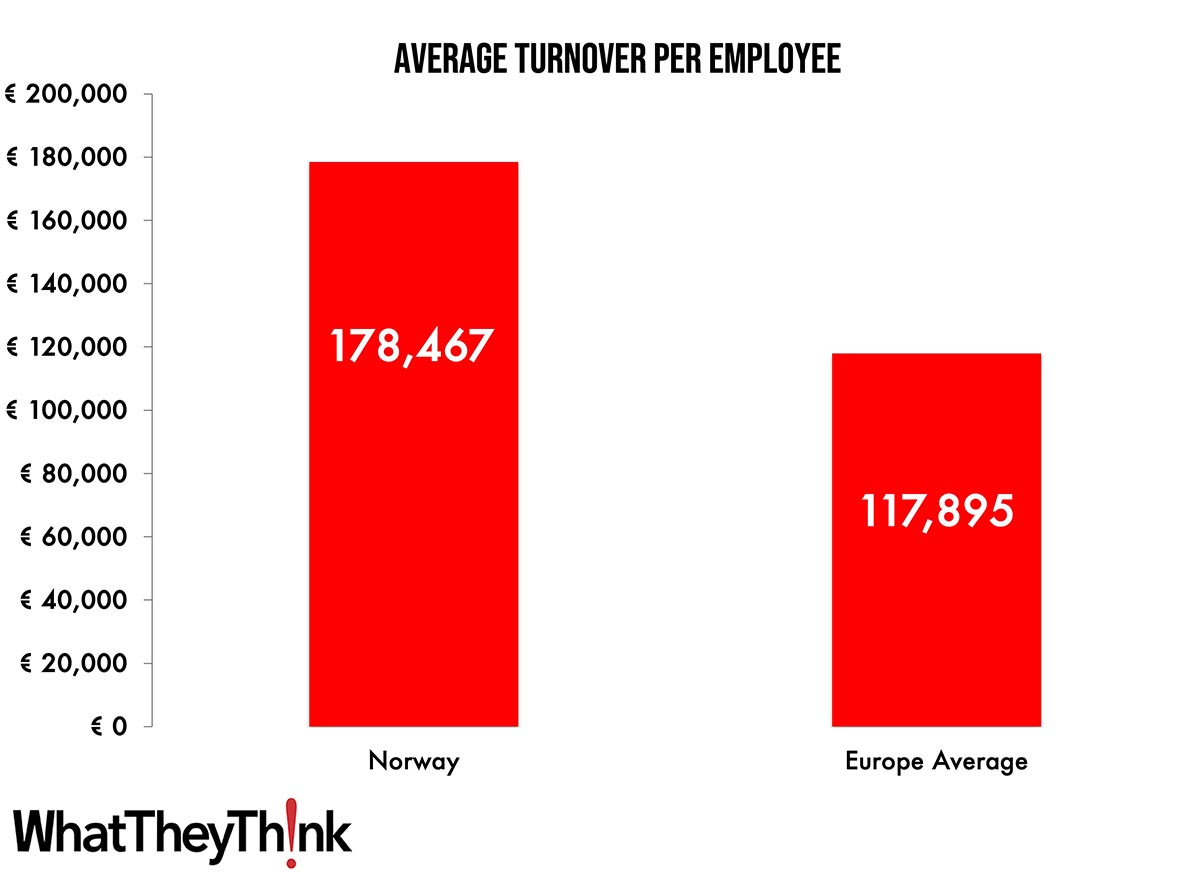The full results on turnover (revenues) in the printing industry in Europe for 2020 were published late in 2022—after index data was the only source for print volume developments during the pandemic. While the index data only allowed for estimating volume developments, now real turnover data is available - even if the data is far from perfect.
The turnover for commercial printing in Norway has been in decline for years and since 2018 the decline even accelerated. Overall, the turnover stood at slightly above €800 million in 2019, after being close to €937 million in 2016. In 2020, turnover dropped decisively by 19.4% to about €650 million due to the pandemic. The decline rate is above the European average of 15% and close to the rate seen in Sweden. The drop was not far off from the estimated decline based on volume index data for 2020. The latest production index data indicate that production volumes recovered only slightly in 2021 and have been flat since.
The number of persons employed dropped relatively quickly as well, with an average rate of 4.5% between 2015 and 2019. In 2020, at the onset of the pandemic, a decline of 9.5% ensued. This is a lower rate than the drop in turnover, which makes further declines likely.

Source: Eurostat 2022 and digitalprintexpert.de
Overall, the printing industry in Norway accounted for 0.9% of the total European printing industry in 2020, in the same range as Croatia and about 10% smaller than Denmark. In terms of the number of employees in print, the European share of Norway is markedly lower at 0.6%, in the range of Lithuania and Slovenia.

Source: Eurostat 2022 and digitalprintexpert.de
Based on Eurostat numbers for turnover and the number of employees in the printing industry, the average annual turnover per employee can be calculated. The €178,467 for 2019 is markedly higher than the European average and close to the values of the other Nordic countries or Austria and Switzerland. The employment number does include part-time employees and owners with a salary. The year 2019 has been chosen as a basis for the comparison as 2020 could have been impacted by the COVID-19 pandemic and the differing speeds the labor markets reacted.

Source: Eurostat 2022 and digitalprintexpert.de
Please keep in mind that the data is based on Eurostat numbers for printing and related services (complemented by some estimates), which consists mainly of commercial and publishing printing, including prepress and finishing companies. That means that packaging, data centre, direct mail print or quick print/copy shops are not included or only on a limited basis. In-house print/CRD are not included at all. Europe as used in the series of articles includes the EU countries plus Norway, Switzerland, and the UK. If you have questions about sizing the European printing industry or need clarification, please contact me at [email protected] .
This series on the turnover and employment development in commercial print in Europe will continue. Next time, we will have a look at the printing industry in Croatia.









